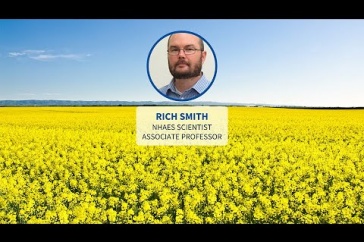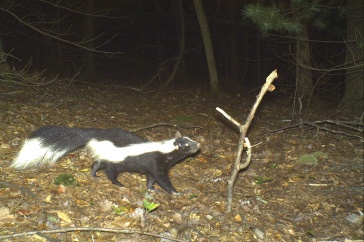
NH Agricultural Experiment Station (NHAES) scientists at the University of New Hampshire are among those who have been awarded a $10 million, five-year federal grant to develop and apply modern DNA-based tools to deliver new cultivated varieties of rosaceous crops such as apples, peaches, strawberries, and cherries with superior product quality and disease resistance.
Considered among the leading scientists worldwide conducting this kind of research, geneticist Tom Davis, bioinformaticist Hailong Zhang, and graduate students Lise Mahoney, David Wood, and Yilong Yang, join 35 scientists from 14 U.S. institutions along with numerous international collaborators to work on genomics, genetics, and breeding of rosaceous crops.

“RosBREED: Combining Disease Resistance with Horticultural Quality in New Rosaceous Cultivars,” the project will adapt and demonstrate new DNA-based tools in 22 U.S. breeding programs, focusing on eight crops: apple, blackberry, peach, pear, rose, strawberry, sweet cherry, and tart cherry. RosBREED brings unprecedented attention to local and regional breeding programs and a commitment to more efficiently, accurately, and creatively develop commercial scion and rootstock cultivars.
“This project includes our team’s recently established strawberry breeding program funded through the Experiment Station at UNH, which aims to release new varieties bred for local growers and markets while being resistant to disease and suitable for organic production. Fruit quality is a top priority, while some of the new varieties also will incorporate ornamental qualities such as novel flower colors and attractive foliage for the home garden and landscape,” Davis said.
The grant is from the USDA National Institute of Food and Agriculture’s Specialty Crop Research Initiative and will be managed by scientists at Michigan State University and Washington State University.
NHAES scientists have been instrumental in the development of advanced tools and methods for genetic testing to determine which strawberries have the best combinations of qualities. They have played an integral role in developing the IStraw90® SNP Array. The array is a powerful tool that allows strawberry breeders to use the DNA of strawberries to select plants with potentially superior combinations of the genes that influence traits of interest, such as disease resistance and fruit taste.
The United States is the world’s leading producer of strawberries. In 2012, the United States produced more than 3 billion pounds valued at $2.4 billion, according to the USDA. Most U.S. strawberries are grown in California. Strawberries are an important crop in New Hampshire. Becky Sideman, associate professor of plant biology and UNH Cooperative Extension professor and specialist in sustainable horticulture production, estimates the retail value of New Hampshire’s strawberry crops at about $1.85 million, which she says is a conservative estimate.
The strawberry is among the most genetically complex plants, with eight sets of chromosomes. In comparison, humans have two sets of chromosomes – one set inherited from each parent. Not surprisingly, it has taken scientists longer to develop DNA analysis tools for strawberry than for some other crop plants and domesticated animals.
-
Written By:
Lori Tyler Gula, PhD | NH Agricultural Experiment Station | lori.gula@unh.edu | 603-862-1452




















































